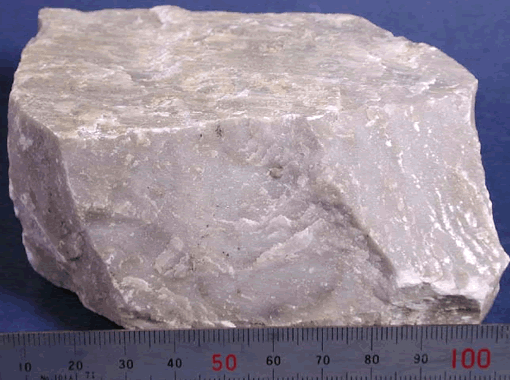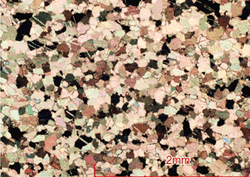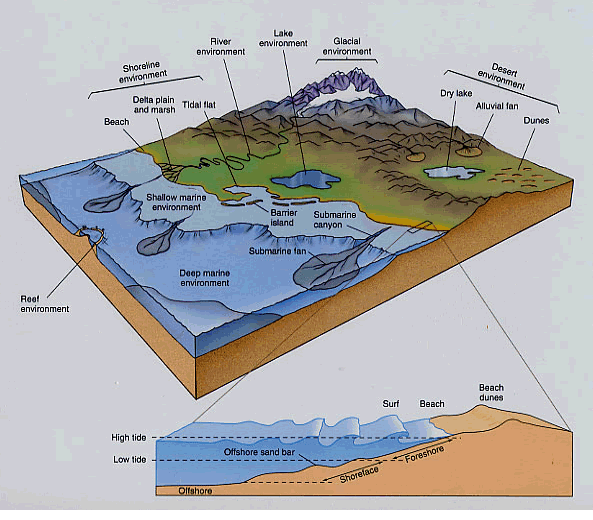 |
| Type of Rock: | Type of sediment: | Group: | Composition: |
| Sedimentary rock | Clastic or nonclastic | Inorganic/biochemical | Calcite, CaCO3 |
|
THIN SECTION A thin section is made by grinding down a slice of rock which has been glued to a glass slide until it reaches a thickness of about 0.03mm (30 microns). At this thickness most minerals become more or less transparent and can therefore be studied by a microscope using transmitted light. |
 |
| Depositional Environments for Limestone |
| One place where limestone deposits are found is in very deep ocean water. Way out in the ocean, where the water is calm and deep, live multitudes of tiny marine animals. These animals use the calcium carbonate in sea water to make their shells. When these animals die, they fall to the sea floor. Over millions of years, the shells accumulate, and are eventually buried, cemented and turned into limestone. It is not common to find large fossils in deep-water limestone. Limestones can also form when the concentration of calcite increases to the point where the molecules start to fall out of the water. Think of chocolate milk. When you put too much chocolate into the milk some falls out. Limestones can also form in this way. Another environment that creates carbonate deposits is a coral reef. Reefs are composed of almost 100% calcium carbonate. If you see a limestone with fossils that resemble corals or any other reef creature, you can imagine that the environment that deposited that limestone was probably associated with a reef. Reefs commonly reside in shallow marine water and are found only in tropical environments. |
Environments of deposition for different sedimentary rocks
